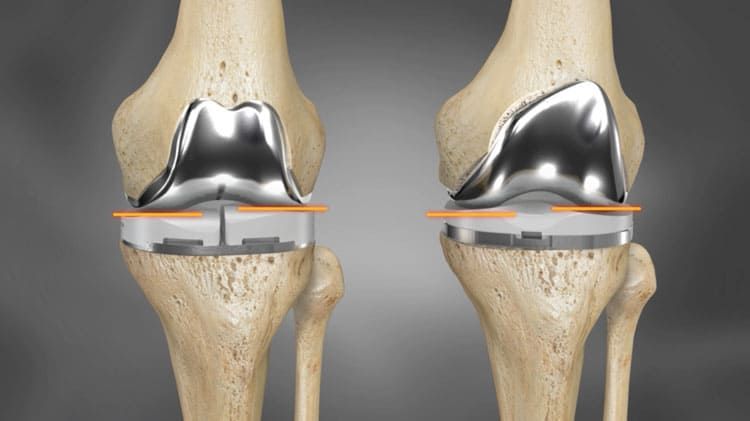Want a new knee? Print one in 3-D

BOULDER — What sets Duane Duggan’s new knees apart from most is that they are custom-fit implants made by using 3-D printing.
The 59-year-old real estate agent from Boulder had a knee replaced in September and is having the other one replaced this month.
While about 600,000 people a year have a knee replaced, Duggan is among the few who have a 3-D printed implant. The process, approved for medical use by the Food and Drug Administration in 2011, has caught the interest of the medical community in the past year, and a few manufacturing companies are targeting the medical industry with products ranging from hips and knees to teeth and skulls.
SPONSORED CONTENT
Select your Republic Services residential cart now!
In preparation for Republic Services becoming the primary provider of residential recycling, yard trimmings, and trash, residents should now select the best cart size and service schedule for their household needs.
The British research firm IDTechEx estimates the medical market for 3-D printers could grow from $141 million in 2014 to $868 million by 2025, led by users deploying the machines to make dental and orthopedic implants.
Massachusetts-based ConforMIS made Duggan’s new knees. The company’s 3-D manufacturing produces implants made of a standard metal – cobalt chromium molybdenum – and a specialized plastic. The parts are made by nozzles laying down fine sedimentary layers of material controlled by a software program.
The specifications for the size and shape of the implant are created by taking a CT scan of the knee and creating a digital pattern that reflects the precise size and shape of the patient’s knee.
That’s appealing to doctors and patients. By fitting the implant to the bone, doctors don’t need to try to shape the bone to the implant.
One of the first
Dr. Michael Wertz, an orthopedic surgeon and founding partner of the Orthopedic Professional Association, which recently was renamed Boulder Bone and Joint, has performed more than 1,000 hip, shoulder and knee replacements. He is one of the first doctors in the United States to use computer-generated implants. He has 10 operations under his belt, the first three months ago.
No two knees are alike, Wertz said. The custom fit allows surgeons to shape the implant to the knee, rather than reshaping the knee to fit an off-the-shelf implant.
Wertz, who is working on Duggan’s knees, said a 3-D printed knee implant costs about $4,000, not much different than off-the-shelf models.
Patients have reported faster recovery times and less pain than with traditional knee implants.
“These fit so well,” Wertz said. “Following a surgery, there is more mobility, less bleeding, much less trauma to the bone. They create increased stability for a patient’s knee and provide more flexion and extension.”

Wertz said using the custom implants saves about 15 minutes in the operating room.
“I’m no Speedy Gonzalez,” he said, “but for me, it reduces a one-hour, 45-minute operation to about an hour and a half.”
So far, so good
“It fits like a glove,” said Duggan, an avid skier, cyclist, trail runner and racquetball player.
Duggan has had several knee injuries resulting in seven surgeries since 1983, including three to repair torn ligaments and the others to remove debris.
“I’ve been needing to replace my knees for about 10 years,” Duggan said. “I was hoping to make it to 60, but it got so bad that I couldn’t run and couldn’t ski. After three ski runs I wanted to quit.”
Duggan heard about the new concept of custom-fit implants and decided to have both knees done in separate operations scheduled two months apart.
Duggan said the bone-on-bone pain he had been suffering was gone right after surgery. He was moving the pedals of a stationary bike in half circles the first couple of days after surgery and was on a road-bike stationary trainer in two weeks. By four weeks, he took a spin around the block on his bike.
“It still feels tight, like the pressure of an Ace bandage,” Duggan said. “But it is feeling more normal each day.”
Doug Storum can be reached at 303-630-1959, 970-416-7369 or dstorum@bizwestmedia.com.
BOULDER — What sets Duane Duggan’s new knees apart from most is that they are custom-fit implants made by using 3-D printing.
The 59-year-old real estate agent from Boulder had a knee replaced in September and is having the other one replaced this month.
While about 600,000 people a year have a knee replaced, Duggan is among the few who have a 3-D printed implant. The process, approved for medical use by the Food and Drug Administration in 2011, has caught the interest of the medical community in the past year, and a few manufacturing companies are…
THIS ARTICLE IS FOR SUBSCRIBERS ONLY
Continue reading for less than $3 per week!
Get a month of award-winning local business news, trends and insights
Access award-winning content today!

